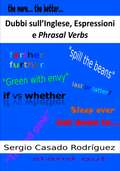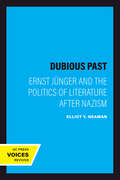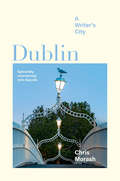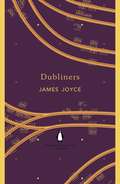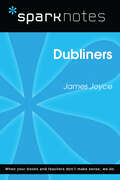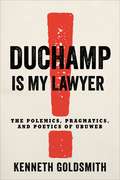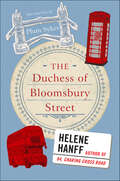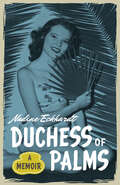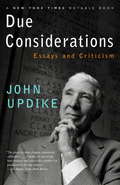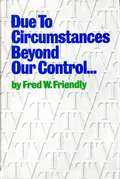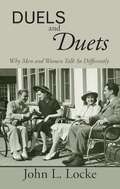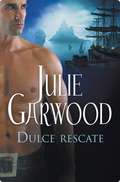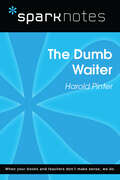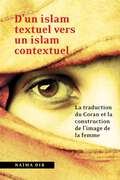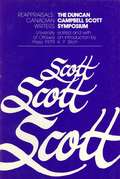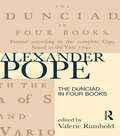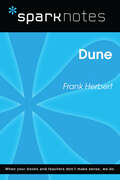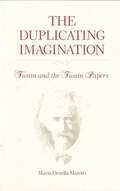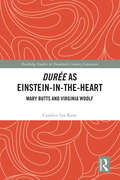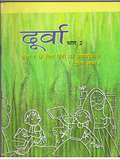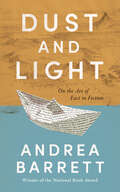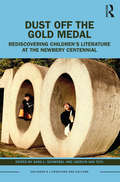- Table View
- List View
Dubbi sull'Inglese, Espressioni e Phrasal Verbs
by Sergio Casado Rodríguez Flaminia MiragliaQuesto libro è pensato per studenti di inglese di livello intermedio che desiderano ampliare il loro vocabolario apprendendo nuovi phrasal verbs e nuove espressioni, e che vogliono risolvere alcuni dei dubbi più comuni.
A Dubious Past: Ernst Jünger and the Politics of Literature after Nazism (Weimar and Now: German Cultural Criticism #19)
by Elliot Y. NeamanA Dubious Past examines from a new perspective the legacy of Ernst Jünger (1895-1998), one of the most fascinating figures in twentieth-century German intellectual life. From the time he burst onto the literary scene with The Storms of Steel in the early 1920s until he reached Olympian age in a reunited Germany, Jünger's writings on a vast range of topics generated scores of controversies. In old age he became a cultural celebrity whose long life mirrored the tragic twists and turns of Germany's most difficult century.Elliot Neaman's study reflects an impressive investigation of published and unpublished material, including letters, interviews, and other media. Through his analysis of Jünger's work and its reception over the years, he addresses central questions of German intellectual life, such as the postwar radical conservative interpretation of the Holocaust, divided memory, German identity, left and right critiques of civilization, and the political allegiances of the German and European political right. A Dubious Past reconceptualizes intellectual fascism as a sophisticated critique of liberal humanism and Marxism, one that should be seen as coherent and—for a surprising number of contemporary intellectuals—all too attractive.
Dublin: A Writer's City (Imagining Cities)
by Christopher MorashThe words of its writers are part of the texture of Dublin, an invisible counterpart to the bricks and pavement we see around us. Beyond the ever-present footsteps of James Joyce's characters, Leopold Bloom or Stephen Dedalus, around the city centre, an ordinary-looking residential street overlooking Dublin Bay, for instance, presents the house where Nobel Laureate Seamus Heaney lived for many years; a few blocks away is the house where another Nobel Laureate, W. B. Yeats, was born. Just down the coast is the pier linked to yet another, Samuel Beckett, from which we can see the Martello Tower that is the setting for the opening chapter of Ulysses. But these are only a few. Step-by-step, Dublin: A Writer's City unfolds a book-lover's map of this unique city, inviting us to experience what it means to live in a great city of literature. The book is heavily illustrated, and features custom maps.
Dubliners (The Penguin English Library)
by James JoyceWith an essay by J. I. M. Stewart.'Every night as I gazed up at the window I said softly to myself the word paralysis. It had always sounded strangely in my ears ... But now it sounded to me like the name of some maleficent and sinful being. It filled me with fear, and yet I longed to be nearer to it and to look upon its deadly work'From a child grappling with the death of a fallen priest, to a young woman's dilemma over whether to elope to Argentina with her lover, to the dance party at which a man discovers just how little he really knows about his wife, these fifteen stories bring the gritty realism of existence in Joyce's native Dublin to life. With Dubliners, James Joyce reinvented the art of fiction, using a scrupulous, deadpan realism to convey truths that were at once blasphemous and sacramental.The Penguin English Library - 100 editions of the best fiction in English, from the eighteenth century and the very first novels to the beginning of the First World War.
Dubliners (SparkNotes Literature Guide Series)
by SparkNotesDubliners (SparkNotes Literature Guide) by James Joyce Making the reading experience fun! Created by Harvard students for students everywhere, SparkNotes is a new breed of study guide: smarter, better, faster.Geared to what today's students need to know, SparkNotes provides:chapter-by-chapter analysis explanations of key themes, motifs, and symbols a review quiz and essay topics Lively and accessible, these guides are perfect for late-night studying and writing papers.
Duchamp Is My Lawyer: The Polemics, Pragmatics, and Poetics of UbuWeb
by Kenneth GoldsmithIn 1996, during the relatively early days of the web, Kenneth Goldsmith created UbuWeb to post hard-to-find works of concrete poetry. What started out as a site to share works from a relatively obscure literary movement grew into an essential archive of twentieth- and twenty-first-century avant-garde and experimental literature, film, and music. Visitors around the world now have access to both obscure and canonical works, from artists such as Kara Walker, Yoko Ono, Pauline Oliveros, Samuel Beckett, Marcel Duchamp, Cecil Taylor, Glenn Ligon, William Burroughs, and Jean-Luc Godard.In Duchamp Is My Lawyer, Goldsmith tells the history of UbuWeb, explaining the motivations behind its creation and how artistic works are archived, consumed, and distributed online. Based on his own experiences and interviews with a variety of experts, Goldsmith describes how the site navigates issues of copyright and the ways that UbuWeb challenges familiar configurations and histories of the avant-garde. The book also portrays the growth of other “shadow libraries” and includes a section on the artists whose works reflect the aims, aesthetics, and ethos of UbuWeb. Goldsmith concludes by contrasting UbuWeb’s commitment to the free-culture movement and giving access to a wide range of artistic works with today’s gatekeepers of algorithmic culture, such as Netflix, Amazon, and Spotify.
The Duchess of Bloomsbury Street
by Helene Hanff“A charmer. Will beguile an hour of your time and put you in touch with mankind.” —New York TimesNewly reissued with an introduction by Plum Sykes, this cult favorite is a delightful diary—think Nancy Mitford–meets–Nora Ephron—chronicling author Helene Hanff’s “bucket list” trip to London (at the age of fifty-five!) after the unexpected success of her memoir 84 Charing Cross Road. When she’s invited to London for the English publication of her wildly successful book, 84 Charing Cross Road—in which she shares two decades of correspondence with Frank Doel, a British bookseller who became a dear friend—New York writer Helene Hanff is thrilled to realize a lifelong dream. The trip will be bittersweet, because she can’t help wishing Frank was still alive, but she’s determined to capture every moment of the journey.Helene’s time in London exceeds her wildest expectations. She visits landmarks like Buckingham Palace and Windsor Castle; explores Shakespeare’s favorite pub, Dickens’s house, and the Oxford University courtyard where John Donne used to walk; and makes a host of new friends from all walks of life, who take her to the theater, introduce her to institutions like Harrod’s, and share with her their favorite corners of countryside.A love letter to England and its literary heritage, written by a Manhattanite who isn’t afraid to speak her mind (or tell a British barman how to make a real American martini), The Duchess of Bloomsbury Street is an endearing account of two wildly different worlds colliding; it’s an outsider’s witty, vibrant portrait of idiosyncratic British culture at its best, as well as a profound commentary about the written word’s power to sustain us, transport us, and unite us.
Duchess of Palms: A Memoir
by Nadine EckhardtChild of the Great Depression, teenage "Duchess of Palms" beauty queen, wife of an acclaimed novelist and later of a brilliant U. S. congressman, and ultimately a successful single working woman and mother, Nadine Eckhardt has lived a fascinating life. In this unique, funny, and honest memoir, she recounts her journey from being a "fifties girl" who lived through the men in her life to becoming a woman in her own right, working toward her own goals. Eckhardt's first marriage to writer Billy Lee Brammer gave her entrée to liberal political and literary circles in Austin and Washington, where she and Brammer both worked for Senator Lyndon B. Johnson. She describes the heady excitement of LBJ's world-a milieu that Brammer vividly captured in his novel The Gay Place. She next recalls her second marriage to Bob Eckhardt, whom she helped get elected to the U. S. House of Representatives, as well as her growing involvement with the counterculture of social protest, sexual revolution, and drug use. Eckhardt honestly recounts how the changing times changed her perception of herself, recalling that "I didn't know how to achieve for myself, only for others, and I felt ripped off and empty. " This painful realization opened the door to a new life for Eckhardt. Her memoir concludes with a joyful description of her multifaceted later life as a restaurateur, assistant to Molly Ivins, writer, and center of a wide circle of friends.
Due Considerations
by John Updike"A drop of truth, of lived experience, glistens in each." This is how John Updike, one of the world's most acclaimed novelists, modestly describes his nonfiction work, the brilliant and graceful essays and criticism he has written for more than five decades. Due Considerations is his sixth collection, and perhaps the most moving, stylish, and personal volume yet. Here he reflects on such writers and works as Emerson, Uncle Tom's Cabin, Colson Whitehead, The Wizard of Oz, Don DeLillo, The Portrait of a Lady, Margaret Atwood, The Mabinogion, and Proust. Updike also provides a whimsical and insightful list of "Ten Epochal Moments in the American Libido," from Pocahontas and John Smith to Bill Clinton and Monica Lewinsky; muses on how the practice of faith changes but doesn't disappear; and shares his reaction to the attacks on 9/11 (in Brooklyn that day, "Freedom, reflected in the street's diversity and quotidian ease, felt palpable"). Due Considerations proves that John Updike is, as noted in The Boston Globe, "our greatest critic of literature."Praise for Due Considerations:A New York Times Notable Book"The prose is clean, elegant, exquisitely calibrated. . . . [Updike is] one of the best essayists and critics this country has produced in the last century."-Los Angeles Times Book Review"Updike's scope is rather breathtaking. . . . When I do not know the subject well-as in his finely illustrated art reviews of Bruegel, Dürer and Goya-I learn much from what Updike has to impart. When he considers an author I love, like Proust or Czeslaw Milosz, I often find myself appreciating familiar things in a new way."-Christopher Hitchens, The New York Times Book Review"With his pack-rat curiosity . . . his prodigious memory and attendant knack for choosing the 'just-right' fact or quote, and his ever-present astonishment at both the stupidity and genius on display wherever he looks, Updike is in many ways an ideal critic. . . . It is a privilege to be in the company of this wonderfully American voice."-Rocky Mountain News"Updike knows more about literature than almost anyone breathing today. . . . He's beyond knowledgeable-he makes Google look wanting."-Baltimore Sun"Provocative and incisive . . . This volume reminds us that [Updike's] prose sets our literary bar very high indeed."-The Charlotte Observer"Updike offers an effortless mastery of form and content."-The Boston GlobeFrom the Trade Paperback edition.
Due to Circumstances Beyond Our Control . . .
by Fred W. FriendlyThis discourse on the importance of television in society presents Friendly's uncannily prescient views on the corrosive effect of money on the news business, the sensationalization of news reporting, and the viewing public's appetite for quality broadcasting. With Edward R. Murrow, Fred Friendly practically invented television journalism. Through telling anecdotes and penetrating analysis, he recalls his collaborations with Murrow, from their stinging documentary on Senator Joseph McCarthy to CBS's pioneering coverage of the burgeoning civil rights and anti-Vietnam War movements. Friendly also recounts his resignation as president of CBS News in 1966, when the network ran reruns of I Love Lucy instead of Senate hearings on the war in Vietnam. Following that controversial decision, he began writing this memorable book.
Duels and Duets: Why Men and Women Talk So Differently
by John L. LockeWhy do men and women talk so differently? And how do these differences interfere with communication between the sexes? In search of an answer to these and other questions, John Locke takes the reader on a fascinating journey, from human evolution through ancient history to the present, revealing why men speak as they do when attempting to impress or seduce women, and why women adopt a very different way of talking when bonding with each other, or discussing rivals. When men talk to men, Locke argues, they frequently engage in a type of 'dueling', locking verbal horns with their rivals in a way that enables them to compete for the things they need, mainly status and sex. By contrast, much of women's talk sounds more like a verbal 'duet', a harmonious way of achieving their goals by sharing intimate thoughts and feelings in private.
Dulce rescate
by Julie GarwoodEl pirata Pagan, capaz de las más grandes atrocidades, es al mismo tiempo un ídolo para los pobres, con quienes comparte los tesoros que roba a los ricos. El marqués de Cainewood promete vengar a su hermano, muerto a manos del malvado pirata. Con el fin de trabar relación con el asesino, comienza a frecuentar las tabernas preferidas por los de su calaña.En uno de esos antros conoce a Jade, una belleza de rizada cabellera y ojos verdes que, acosada por unos asesinos, recurre a él confundiéndolo con Pagan. A partir de entonces, se creará entre ambos una extraña relación, y el marqués sucumbirá a los encantos de la alocada joven, hundiéndose en un abismo de pasiones y desenfreno...Quedaron atrapados en una telaraña de amor y frenesí.
The Dumb Waiter (SparkNotes Literature Guide Series)
by SparkNotesThe Dumb Waiter (SparkNotes Literature Guide) by Harold Pinter Making the reading experience fun! Created by Harvard students for students everywhere, SparkNotes is a new breed of study guide: smarter, better, faster.Geared to what today's students need to know, SparkNotes provides:chapter-by-chapter analysis explanations of key themes, motifs, and symbols a review quiz and essay topics Lively and accessible, these guides are perfect for late-night studying and writing papers.
D’un islam textuel vers un islam contextuel: La traduction du Coran et la construction de l’image de la femme (Regards sur la traduction)
by Naïma DibLa mise en tutelle de la musulmane est-elle cautionnée par le Coran? L'idée de l'infériorité de la femme est-elle réellement inscrite dans le Coran? Telles sont les questions auxquelles l'auteure tente de répondre dans le présent ouvrage. Elle se penche sur les diverses approches adoptées par des penseurs réformistes musulmans, dont elle expose les enjeux sociaux, politiques et culturels ainsi que les finalités. Elle procède à une analyse comparative du Coran et d'un certain nombre de traductions françaises et anglaises, à l'issue de laquelle elle fait émerger une conception de la femme et du monde différente de celle proposée par les traductions. Elle explore ensuite le discours social commun, discours auquel participe la traduction, et qui se révèle empreint d'une vision androcentrique dans laquelle l'infériorité de la femme découle d'une construction humaine, inspirée par un besoin de domination. Grâce aux analyses sémiotique et sociohistorique, l'auteur démontre que le Coran peut être lu autrement et ce qui en ressort est une conception plus égalitaire de l'homme et de la femme. Publié en français
The Duncan Campbell Scott Symposium
by K. P. StichOn April 27-29, 1979, the Department of English at the University of Ottawa held the sixth conference in its series of symposia on major Canadian writers. In the tradition of the series, the Duncan Campbell Scott Symposium attracted scholars from across North America to examine and discuss Scott's life and writings. Coincidentally, one might add, the Symposium took place within only a short walk from where Scott lived and worked in Ottawa. Presenting a breadth of papers and topics, the program was intended to reappraise as much as possible the impressive range of Scott's lyrical, dramatic and narrative poetry as well as his fiction, and to open new vistas on his public and private life. With Scott such reappraisals were particularly timely because our faith in late nineteenth-century Canadian poets needs the support of microscopes: "'Faith' is a fine invention /," says Emily Dickinson, "When Gentlemen can see --But Microscopes are prudent / In an Emergency." The emergency of either unduly magnifying or belittling older Canadian literature is real and the Symposium has helped to clarify the significance of Scott as a writer and of his work as a "moment of becoming" and a "watershed" -- to borrow phrases from John P. Matthews's and Gordon Johnston's papers -- in the making of this country's literature.
The Dunciad in Four Books: The Dunciad (1728) And The Dunciad Variorum (1729) (Longman Annotated Texts)
by Valerie RumboldThe Dunciad in Four Books of 1743 was the culmination of the series of Dunciads which Alexander Pope produced over the last decade and a half of his life. It comprises not only a poem, but also a mass of authorial annotation and appendices, and this authoritative edition is the only one available which gives all the verse and the prose in a clearly laid-out form, with a full modern commentary. Accessibly presented on the same page as Pope’s text are explanatory notes, written in a style adapted to the needs of undergraduate readers, but still comprehensive enough to address the interests of scholars. The many books and pamphlets to which Pope refers have been examined in detail, and the commentary takes advantage of the fifty years’ scholarship on literary, bibliographical, cultural and political aspects of the period which has accumulated since James Sutherland’s The Dunciad, volume five of the Twickenham Edition. A substantial introduction offers a stimulating and helpful approach to the work, and the bibliography includes extensive suggestions for further reading.
Dune (SparkNotes Literature Guide Series)
by SparkNotesDune (SparkNotes Literature Guide) by Frank Herbert Making the reading experience fun! Created by Harvard students for students everywhere, SparkNotes is a new breed of study guide: smarter, better, faster.Geared to what today's students need to know, SparkNotes provides:chapter-by-chapter analysis explanations of key themes, motifs, and symbols a review quiz and essay topics Lively and accessible, these guides are perfect for late-night studying and writing papers.
The Duplicating Imagination: Twain and the Twain Papers
by Maria MarottiMaria Marotti applies a unique mixture of strains of contemporary literary theory to the body of posthumously published works so far published in the Mark Twain Papers series, examining these late, frequently incomplete or abandoned, and usually experimental, works in theoretical light. Marotti's approach is a text-centered one, semiotic and structuralist in inspiration, and she brings a fresh Continental perspective to bear on an author usually treated biographically, thematically, psychologically. Her concern is with generic definition, and this guides her shaping of the book into four chapters on burlesque, fantasy and dream voyage, romance, and myth. She advances with success the finding, novel in Twain scholarship, that Mark Twain really was experimenting with aspects of fiction ordinarily thought of today as modern or postmodern, and Twain scholars will see that simply being able to consider his various experiments in the terms posed by these theories is itself grounds for changing or at least for reevaluating how they have looked at these writings in the past. Marotti further demonstrates the effectiveness of her terms and terminology for picking up the story of Twain's roots in folklore and oral storytelling, and for grounding these well-known stories in the entirety of his literary development.Interest in Twain is at an all-time high. This penetrating, authoritative, and lively book has the capacity to appeal to an audience far beyond the narrow range of literary theorists. Marotti's contribution, in addition to the presentation of the Twain Papers as a corpus deserving of the kind of attention that has been directed to Twain's published work, is the promotion of recognition of his as a bold experimenter in literary form, an aspect of his achievement that all too often has been neglected.
The Duplicating Imagination: Twain and the Twain Papers
by Maria MarottiMaria Marotti applies a unique mixture of strains of contemporary literary theory to the body of posthumously published works so far published in the Mark Twain Papers series, examining these late, frequently incomplete or abandoned, and usually experimental, works in theoretical light. Marotti's approach is a text-centered one, semiotic and structuralist in inspiration, and she brings a fresh Continental perspective to bear on an author usually treated biographically, thematically, psychologically. Her concern is with generic definition, and this guides her shaping of the book into four chapters on burlesque, fantasy and dream voyage, romance, and myth. She advances with success the finding, novel in Twain scholarship, that Mark Twain really was experimenting with aspects of fiction ordinarily thought of today as modern or postmodern, and Twain scholars will see that simply being able to consider his various experiments in the terms posed by these theories is itself grounds for changing or at least for reevaluating how they have looked at these writings in the past. Marotti further demonstrates the effectiveness of her terms and terminology for picking up the story of Twain's roots in folklore and oral storytelling, and for grounding these well-known stories in the entirety of his literary development.Interest in Twain is at an all-time high. This penetrating, authoritative, and lively book has the capacity to appeal to an audience far beyond the narrow range of literary theorists. Marotti's contribution, in addition to the presentation of the Twain Papers as a corpus deserving of the kind of attention that has been directed to Twain's published work, is the promotion of recognition of his as a bold experimenter in literary form, an aspect of his achievement that all too often has been neglected.
Durée as Einstein-in-the-Heart: Mary Butts and Virginia Woolf (Routledge Studies in Twentieth-Century Literature)
by Candice Lee KentDurée as Einstein-in-the-Heart traces the trajectory of modernist interaction with Bergson and Einstein through the works of Virginia Woolf (1882–1941) and Mary Butts (1890–1937). It presents an overview of critical approaches that focus on time in Woolf’s novels, and that foreground Bergson in their analyses of Woolf. It then examines how Woolf’s formal experimentation, and theorisation of time, in Jacob’s Room (1922) and Mrs Dalloway (1925) relates to Bergson’s temporal theories. This is followed by a discussion on the role Bergson’s thinking played in the early formulation of Butts’s ideas of time, and an analysis of how Bergson’s ideas emerge in the short story ‘Angele au Couvent’ (1923), concluding by highlighting points of contrast in the engagements of Woolf and Butts. The book then documents the growth of Butts’s interest in Einstein’s ideas and shows how she amalgamates these with Bergson’s thinking in her journals and in the most intense of her fictional engagement with Einstein’s ideas, the novel Death of Felicity Taverner (1932). It discusses Butts’s responses to the popular science genre and examines the important role played by J. W. N. Sullivan and Arthur Eddington in the development of her understanding, and interpretation, of physics. It concludes with a discussion of Butts’s antisemitic characterisation of Kralin, as purveyor of corrupted science, in contrast with the Taverners, who are conscious of durée and delight in the abstractions of scientific truth.
Durva Bhag-1 class 6 - NCERT - 23: दूर्वा भाग १ ६वीं कक्षा - एनसीईआरटी - २३
by Rashtriy Shaikshik Anusandhan Aur Prashikshan Parishadयह पुस्तकमाला कक्षा छह से आठ तक के स्तरों पर द्वितीय भाषा के रूप में हिंदी शिक्षण करने वाले हिंदीतर क्षेत्रों के जवाहर नवोदय विद्यालय सहित सभी विद्यालयों के लिए निर्मित की गई है। कक्षा छह के लिए तैयार की गई दूर्वा भाग-1 की कुछ विशेषताएँ इस प्रकार हैं- इस पुस्तक में भाषा शिक्षण के लिए सर्वप्रथम चित्र के माध्यम से शब्द परिचय करवाया गया है। इसी के साथ लिपि की संरचना और शब्द के उच्चारण को भी विद्यार्थी जान सकता है। इससे सुनने, बोलने और पढ़ने की क्षमता विकसित हो सकेगी। विद्यार्थियों में सुनने, समझने और बोलने की क्षमता को सशक्त बनाने के लिए प्रारंभ में मौखिक पाठों के साथ ग्यारह पाठ दिए गए हैं। इनमें बारंबारता (फ्रीक्वेंसी) की प्रक्रिया अपनाई गई है, ताकि सिखाई जानेवाली भाषा से विद्यार्थी का परिचय उत्तरोत्तर बढ़ सके। बलाघात, अनुतान आदि उच्चारण संबंधी विशेषताओं को सिखलाने के लिए पाठों में वार्तालाप अधिक रखे गए हैं। पाठों की संरचनाएँ पूर्वनिर्धारित और अभिक्रमिक हैं। जिन पाठों में जो संरचनाएँ शिक्षण बिंदु के रूप में प्रमुखतः निर्धारित की गई हैं, उन्हें ही पाठ में स्वभाविक ढंग से उभारने का प्रयास किया गया है, ताकि विद्यार्थी हिंदी भाषा की संरचना से परिचित हो सके, साथ ही अपनी ज्ञात भाषा और हिंदी की संरचनाओं की समानता तथा उनके अंतर की पहचान भी कर सके।
Durva Bhag-2 class 7 - NCERT - 23: दूर्वा भाग-२ ७वीं कक्षा - एनसीईआरटी - २३
by Rashtriy Shaikshik Anusandhan Aur Prashikshan Parishadदूर्वा भाग 2 कक्षा 7 के लिए हिंदी की पाठ्यपुस्तक-द्वितीय भाषा - यह किताब राष्ट्रीय पाठ्यचर्या की रूपरेखा (2005) के आधार पर तैयार किए गए पाठ्यक्रम पर आधारित है। यह पारंपरिक भाषा-शिक्षण की सभी सीमाओं से आगे जाती है। राष्ट्रीय पाठ्यचर्या की नयी रूपरेखा भाषा को बच्चे के व्यक्तित्व का सबसे समृद्ध संसाधन मानते हुए उसे पाठ्यक्रम के हर विषय से जोड़कर देखती है। भाषा की शिक्षा मातृभाषा से प्रभावित मात्र ही नहीं होती बल्कि वह द्वितीय भाषा कौशल की समृद्धि में भी लाभप्रद और सहायक सिद्ध होती है। इसी को ध्यान में रखकर विद्यार्थियों के हिंदी की सामान्य संरचनाओं की जानकारी को धीरे-धीरे उसकी विशिष्ट और विपुल संरचनाओं की जानकारी से जोड़ने की कोशिश इसमें की गई है। इसमें यथासंभव सहज और सरल भाषिक संरचनाओं वाले सरस और रोचक पाठों का चयन किया गया है। पाठों के चयन में हिंदी के महत्त्वपूर्ण रचनाकारों की बाल रचनाओं को शामिल कर द्वितीय भाषा के रूप में हिंदी पढ़ने-पढ़ानेवालों को हिंदी की समृद्ध साहित्य परंपरा के प्रति रुचि बढ़ाने की भी कोशिश है। पाठों की भाषा और विषयवस्तु न केवल महत्त्वपूर्ण है बल्कि अन्य विषयों के ज्ञान को भी अपने में समेटे हुए है, जो विद्यार्थियों की भाषा और साहित्य को पढ़ने-समझने और जानने-बताने की रुचि को बढ़ाने में सहायक होगी।
Dust and Light: On the Art of Fact in Fiction
by Andrea BarrettOne of Literary Hub's Most Anticipated Books of 2025 The National Book Award–winning writer’s intimate exploration of how fact is transformed into fiction. Hailed as a "genius-enchantress" (Karen Russell) and winner of the MacArthur Fellowship, the celebrated novelist Andrea Barrett has for decades reached backward to find inspiration from the past and written acclaimed and prizewinning works of historical fiction. In Dust and Light, the first work of nonfiction of her extraordinary career, Barrett draws from that deep well of experience to explore the mysteries, methods, and delights of the form. Inspiration found in the past, she argues, can illuminate fiction, just as dust scatters light and makes the unseen visible. Barrett writes of lessons gleaned from the classic work of some of her guiding lights (Willa Cather, Henry James, Leo Tolstoy, Virginia Woolf), as well as the work of such contemporary masters as Hilary Mantel, Toni Morrison, Colm Tóibín, and Jesmyn Ward. She reveals how she created some of her own beloved works, taking readers on a fascinating journey into some of the largest questions in the genre: How does a writer find meaningful subject matter beyond the confines of their life? How are scraps of history found, used, misused, manipulated, and transformed into a fully formed narrative? And what are the perils as well as the potential of this process? Building on pieces originally published in leading literary magazines and featured in The Best American Essays, Dust and Light is an elegant exploration of the hazy borderlands of fiction sewn from the materials of history. Filled with profound insights, it will be a delight for any devoted fiction readers, and of great use to aspiring writers too.
Dust Off the Gold Medal: Rediscovering Children’s Literature at the Newbery Centennial (Children's Literature and Culture)
by Sara L. SchwebelThe oldest and most prestigious children’s literature award, since 1922 the Newbery Medal has been granted annually by the American Library Association to the children’s book it deems "most distinguished." Medal books enjoy an outsized influence on American children’s literature, figuring perennially on publishers’ lists, on library and bookstore shelves, and in school curricula. As such, they offer a compelling window into the history of US children’s literature and publishing, as well as into changing societal attitudes about which books are "best" for America’s schoolchildren. Yet literary scholars have disproportionately ignored the Medal winners in their research. This volume provides a critically- and historically-grounded scholarly analysis of representative but understudied Newbery Medal books from the 1920s through the 2010s, interrogating the disjunction between the books’ omnipresence and influence, on the one hand, and the critical silence surrounding them, on the other. Dust Off the Gold Medal makes a case for closing these scholarly gaps by revealing neglected texts’ insights into the politics of children’s literature prizing and by demonstrating how neglected titles illuminate critical debates currently central to the field of children’s literature. In particular, the essays shed light on the hidden elements of diversity apparent in the neglected Newbery canon while illustrating how the books respond—sometimes in quite subtle ways—to contemporaneous concerns around race, class, gender, disability, nationalism, and globalism.
Dust Off the Gold Medal: Rediscovering Children’s Literature at the Newbery Centennial (Children's Literature and Culture)
by Sara L. SchwebelThe oldest and most prestigious children’s literature award, the Newbery Medal has since 1922 been granted annually by the American Library Association to the children’s book it deems "most distinguished." Medal books enjoy an outsized influence on American children’s literature, figuring perennially on publishers’ lists, on library and bookstore shelves, and in school curricula. As such, they offer a compelling window into the history of US children’s literature and publishing, as well as into changing societal attitudes about which books are "best" for America’s schoolchildren. Yet literary scholars have disproportionately ignored the Medal winners in their research. This volume provides a critically- and historically-grounded scholarly analysis of representative but understudied Newbery Medal books from the 1920s through the 2010s, interrogating the disjunction between the books’ omnipresence and influence, on the one hand, and the critical silence surrounding them, on the other. Dust Off the Gold Medal makes a case for closing these scholarly gaps by revealing neglected texts’ insights into the politics of children’s literature prizing and by demonstrating how neglected titles illuminate critical debates currently central to the field of children’s literature. In particular, the essays shed light on the hidden elements of diversity apparent in the neglected Newbery canon while illustrating how the books respond—sometimes in quite subtle ways—to contemporaneous concerns around race, class, gender, disability, nationalism, and globalism.
